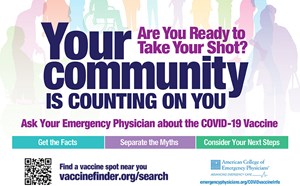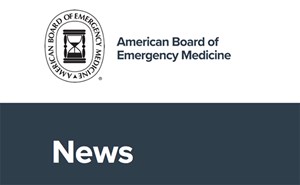By Jay Mullen, MD, MBA, FACEP
Chair-elect, Democratic Group Practice Section
Medical directors and clinicians raced to obtain PPE, prepare hot zones and educate themselves about the coming surge of COVID-19 patients. Meanwhile, democratic group business leaders were beginning to be aware of an unexpected financial threat. Volumes in EDs across the country dropped by 40 percent to 70 percent and stayed low. The surge of COVID-19 patients did not bring volumes back to normal. For the first time in a long time, many EDs found themselves overstaffed and facing an oncoming disruption to their cash flow.
Many democratic groups have had to consider making changes to their compensation and benefits structures. With volumes consistently down, many groups took some or all of the following actions to help develop a strong cash cushion so that they could weather the volume disruption.
- Staffing Reductions. Cut staffing at all EDs to as low as single coverage. Double coverage shifts could be made into uncompensated “call shifts” to provide help if a surge developed. Recognizing that physicians are generally better able to accommodate shifts in household income, some groups replaced some physician coverage with APP hours.
- Sick Leave, Part 1. Most groups already had PTO for APPs but not for physicians. Recognizing that some of their physicians were very high risk and others were starting to become infected or exposed, many groups established a budget neutral sick leave policy for them. Physicians would earn 1 hour of sick leave for every 30 clinical hours they worked. This stayed budget neutral by reducing the hourly base wage proportionally. Physicians were reassured that they could claim their sick leave on a monthly basis if they chose to, making it budget neutral for them as well. Given the immediacy of the need, some groups allowed physicians to take up to 40 hours of sick leave even if they hadn’t yet accrued it. Unearned sick leave was considered an advance.
- Sick Leave, Part 2. Now that clearer guidance is available for the federal Emergency Paid Sick Leave (EPSL), some groups have chosen to take part in the program. This program allows physicians and APPs to take up to 80 hours of sick leave related to COVID before having to dip into any of their own PTO. The clinicians can receive up to $510/day for up to 10 days if they are sick or quarantined, and up to $200/day for up to 10 days if they need to care for a family member that is sick with COVID. The group is reimbursed for this EPSL through retention of payroll taxes.
- Benefits. Benefit policies should be clarified for all our employees. Many groups chose not to require any increased contribution to the benefit package by any of their employees if they were unable to work full time hours because of illness, quarantine or due to the company wide reduction in hours. Some chose to continue benefits for employees for 90 days if they need to take leave.
- Deferment of Overhead. Groups have found help by reaching out to their landlord for their business office, their malpractice insurer, and their life, health, dental and disability insurers. Most are willing to allow the group to defer premiums or rent for up to 90 days.
- Deferment of CME. CME reimbursements were sometimes suspended. Any unused CME allowance can be protected by allowing it to be rolled into next year.
- Compensation Deferment. In a transparent owner level discussion, owners and leaders might agree to further changes. For example, one group did the following:
- Defer or suspend employee student loan assistance.
- Defer payments for sales commissions and other bonuses.
- Defer 3 percent Safe Harbor contributions to all employees.
- Defer 15 percent of leadership stipends to CEO, CMO, COO and Owner-Medical Directors. Non-owner Medical Director stipends might be protected.
- Defer about 50 perfect of productivity payments to owner physicians. This works out to roughly 15 percent of compensation.
- Defer elective “Healthcare Bonus,” which most employees use to fund HSA.
- Apply for Payroll Protection Program.
- Apply for SBA Economic Injury Loan. Initial guidance suggested that a group couldn’t apply for both PPP and the SBA EIL. More recent guidance clarified that this is possible. These funds should go into a separate savings account to help with cash liquidity.
- Apply for Medicare Advanced Payment. This program helps with near term liquidity at the expense of cash flow in the medium term. These funds should go into a separate savings account. They can help as a reserve but must essentially be “paid back” over the future several months in the form of loss of future months’ Medicare payments.
Most owners feel that it was important for the greatest sacrifice to be borne by the owners. Owner physician, partnership-track physicians and APPs are experiencing reductions in hours. With a robust program in place, the group can make sure that they can ride out any bumpy cash flows.





